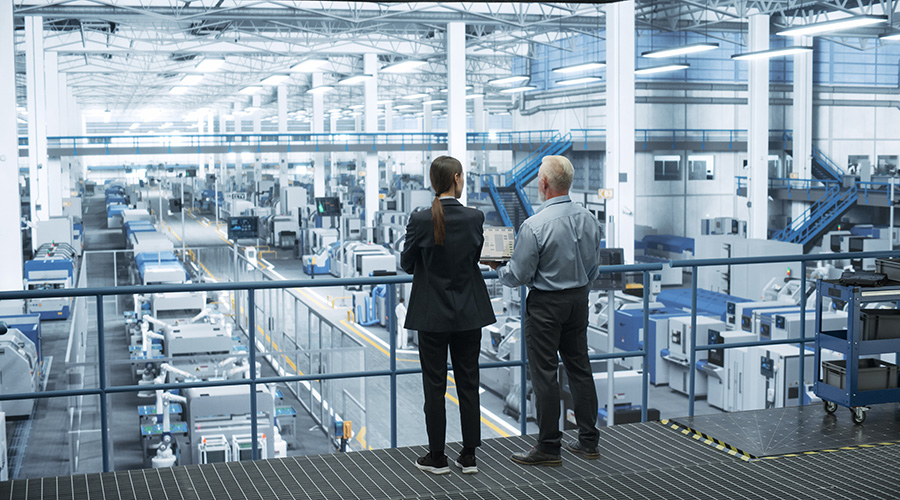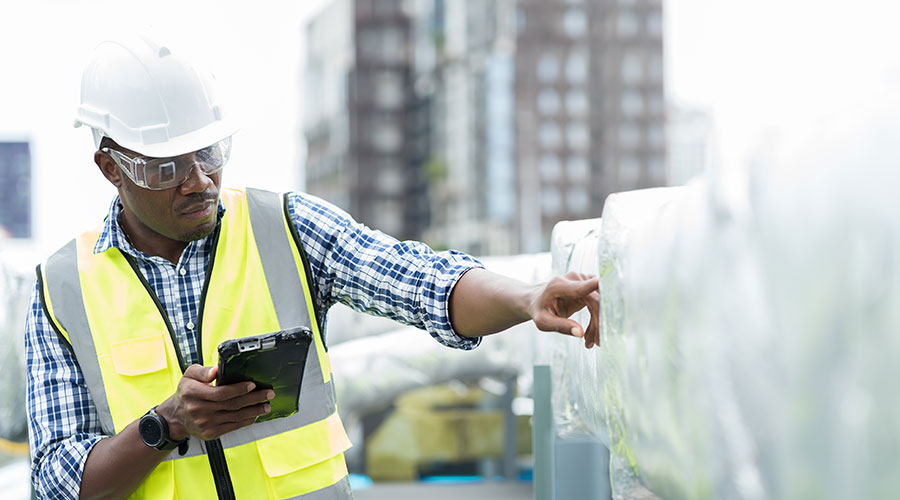A closer look at SECURITY AUDITS
Strategies to ensure that building components help protect operations and occupants
In April 1986, an intruder raped and killed a student at Lehigh University. Compromised security was partly at fault because on the night of the student’s murder, her killer had gained access to the dormitory by passing through three doors that had been propped open.
This and other similar stories graphically illustrate the role of building security in protecting facility occupants and operations. And while security has come under greater scrutiny following last year’s terror attacks, maintenance and engineering managers have long been concerned about protecting facilities.
How best, then, to ensure facility security, particularly in the face of so many varied threats? In most cases, it pays for managers to conduct comprehensive facility security audits that examine key elements of the building, including doors, locks, windows, lighting, surveillance systems and air intakes.
The Audit Process
After the 1996 bombing of Oklahoma City’s Murrah Federal Building bombing, many facilities nationwide stepped up security efforts. But it was last year’s terrorism attacks that truly added new aspects to the auditing process for many facility managers.
“I’ve learned a lot since Sept. 11,” says Kathleen LaGrande, physical security specialist with the U.S. Department of the Interior’s Minerals Management Services (MMS). LaGrande is responsible for 200,000 square feet of space in New Orleans, where 500 geologists, geophysicists, engineers and marine divers house laboratory equipment and other potentially sensitive data, including oceanographic surveys and seismic records.
“We not as high-profile an organization as the Department of Energy — because they actually know where the Gulf [of Mexico] offshore oil reserves are — but we have to be very concerned and very cautious about our security,” LaGrande says. “We did a review of air intakes about a year ago. We needed to determine their accessibility. Fortunately, all the intakes are located out of reach.” It didn’t stop there.
“After the anthrax scare, we examined the mail room,” LaGrande says. “Now, we know which doors to close, which ventilation units to switch off, basically how to secure and isolate that area.”
Alex Galan, crime prevention specialist for the Miami-Dade (Fla.) Community College (MMDC) Kendall Campus, says the college doesn’t conduct full-blown audits frequently but adds that whenever it performs an audit, it is very comprehensive.
“We look at all kinds of things, from lighting to security hardware,” Galan says. “We examine locksets, cylinders, whether or not windows are located next to doors, especially those doors equipped with deadbolts.” The 185-acre campus is very open, so lighting is also a high priority for MMDC security.
“It can get pretty dark here, so we use halogen lighting over walkways and in places where we require high security,” Galan says. In peripheral areas, the college specifies lower-cost florescent lighting.
St. Olaf College, in Northfield, Minn., last conducted a comprehensive security audit four years ago.
“During this audit, we examined all hardware issues, including emergency phones, door locks, window locks, card access systems, and fire and intrusion alarms,” says Fred Behr, the college’s director of public safety. As a result of that audit, the college updated its antiquated card access system and committed to updating campus locks as needed.
Preston Schrock, security manager for Middletown (Ohio) Regional Hospital, says that during an audit, managers also need to examine the areas of a facility are most problematic. For example, as a result of Schrock’s findings, the hospital added physical security in the form of silent panic alarms to its emergency department, where most threats occur in the form of disorderly persons.
Another essential part of any security audit goes beyond checking door locks and air intakes.
“We have also surveyed the population to determine any areas that they are concerned with,” Behr says. Ensuring the security of a facility, such as a campus, requires a well-educated population that spots potential dangers. Layers of protection minimize threats on campus, he says.
Regular Checkups
Many facilities use frequent, informal checks of building integrity to complement full-blown security audits. Galan says that Miami-Dade campus safety officers conduct walk-throughs every single day, making sure everything is in order. And LaGrande’s security duties include weekly checks of physical assets.
“This week, I’m going around checking all the door hinges, making sure that they are non-removable,” she says. “I also do weekly checks on doors and card readers, make sure that the magnets are catching — that sort of stuff.” LaGrange checks lighting in parking lots, ensures that other managers conduct regular fire drills, and verifies that the facility’s offsite monitoring system works properly.
Behr’s campus conducts regular safety patrols, in addition to upgrades to physical maintenance as necessary.
“Several years ago, a full-time locksmith was added to the staff to provide an immediate response to areas of concern regarding locks and security systems,” he says.
Because locks can’t deter threats when they’re left open, Schrock says Middletown Hospital’s officers regularly conduct checkups, noting the date, time and location of unlocked doors and windows.
“The next day, I send the department manager responsible for that door or window an e-mail that lets them know what we’ve found,” Schrock says. “I also note for the manager what’s left vulnerable. Are there computers, medical records, etc., in these offices? Occupants need to know that information, too.”
Collaboration is Key
Managers whose duties include physical security say security efforts improve significantly when facility occupants, building owners or authorities are involved. LaGrande laments that there is only so much a tenant can do to increase security.
“But we’re fortunate that the building owner is so receptive to our concerns,” she says. MMS requires all workers wear photo identification badges, visitors are escorted, and the lobby’s uniformed guards check bags and purses. Card access monitors 65 separate levels of security, and department managers regularly update key, access card and security clearance lists.
“We’re also fortunate that we’ve convinced the other building tenant to require photo IDs and have their own uniformed guard,” LaGrande says.
Schrock says collaboration with local fire and police departments is also critical, and it is a simple and low-cost way of increasing facility security, particularly when managers hand over floor plans.
Technical Concerns
Threat reduction requires managerial vigilance in many forms. Redundancy is also critical to ensuring safety. To help secure the MMS, LaGrande’s security plan automatically invalidates cards of contractors after one year. In certain areas of the MMDC campus, such as classrooms or laboratories that house expensive equipment, the campus layers security.
“Some rooms have double entrances, in some we use CCTV, and in others we motion detectors or an alarm that’s rigged to a card reader,” Galan says. “The area where we house the campus mainframe is the most secure. It involves a three-step process to gain access to the room.”
The campus's fire-alarm system also can be used for evacuation purposes. For example, if the campus safety office receives a bomb threat, officers can ring the system to evacuate select buildings or the entire campus.
“It’s connected to a land line, which is important,” Galan says. “Magnetic pulses — like when someone uses a computer or cell phone — can detonate certain kinds of bombs. For that reason, our fire-alarm system, even though it uses a magnetic pulse switch, will not detonate bombs.”
Tools to Use
In determining what aspects of physical security to upgrade first, managers should take a hard look at improved lighting. For example, on his hospital campus, Schrock says the best deterrent is the uniformed presence of hospital security. Aside from that element, however, is lighting, which is a much less expensive element.
“Vulnerability assessments prove time and again that the best deterrent to crime is adequate lighting,” Schrock says.
“Digital cameras are now my best friends,” LaGrande says. She says she uses a camera to photograph people, and it allows her to instantly document security breaches or areas of concern in facilities.
“From a physical security perspective, managers must identify potential targets, assess the ramifications if damaged or stolen, and install the appropriate hardware to minimize or eliminate the threat level,” says St. Olaf’s Behr. “But many institutions simply do not have the resources to keep pace with technological advances in the area of security.”
To compensate, Behr says people often are the best tool available to managers.
While continuously upgrading locks and other physical barriers are important to St. Olaf’s security, Behr knows that managers must empower facility occupants with the knowledge to spot and report potential danger.
Says Behr, “It’s critical that all areas collaborate and coordinate in order to improve physical security.”
Related Topics:











